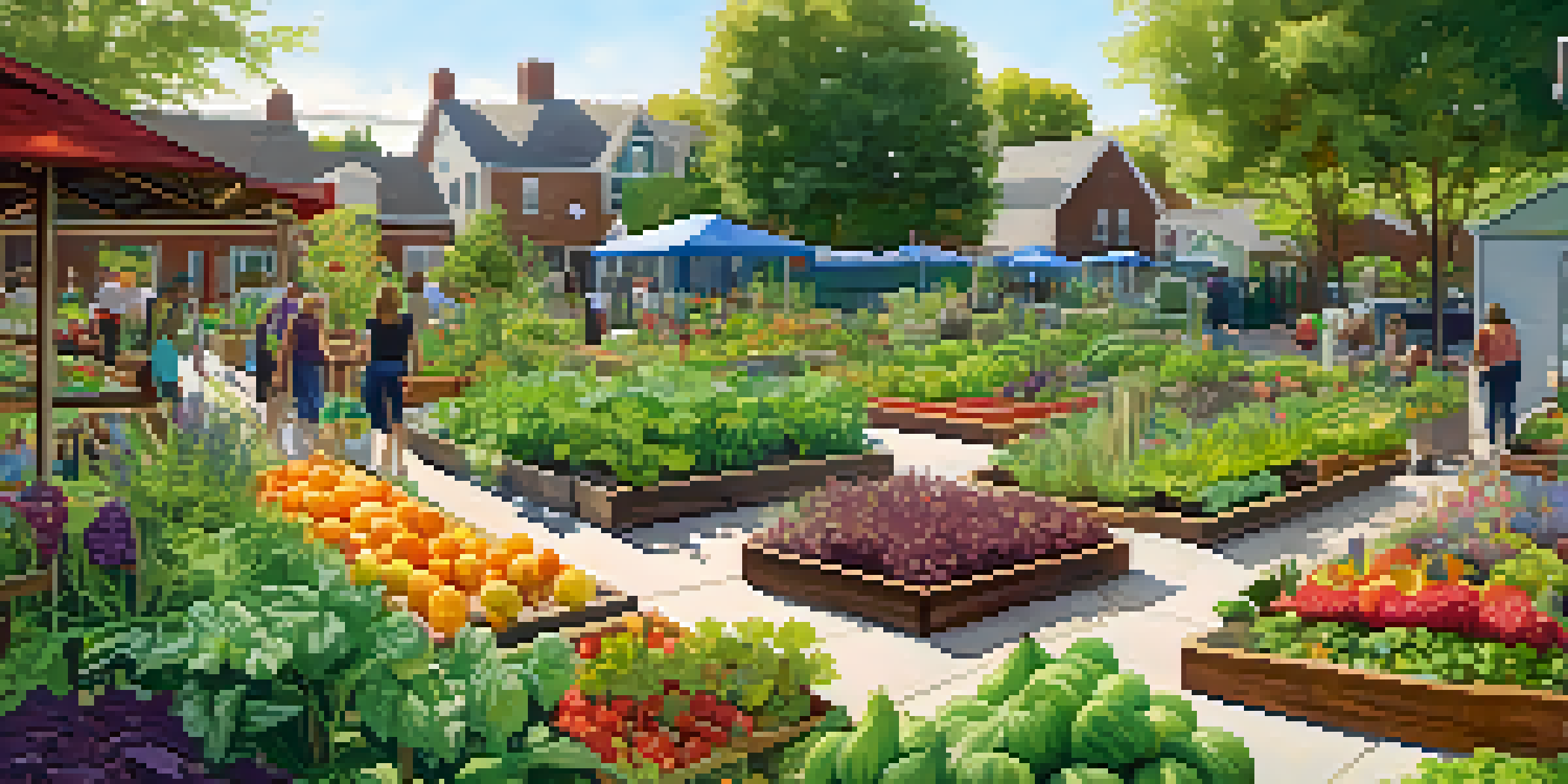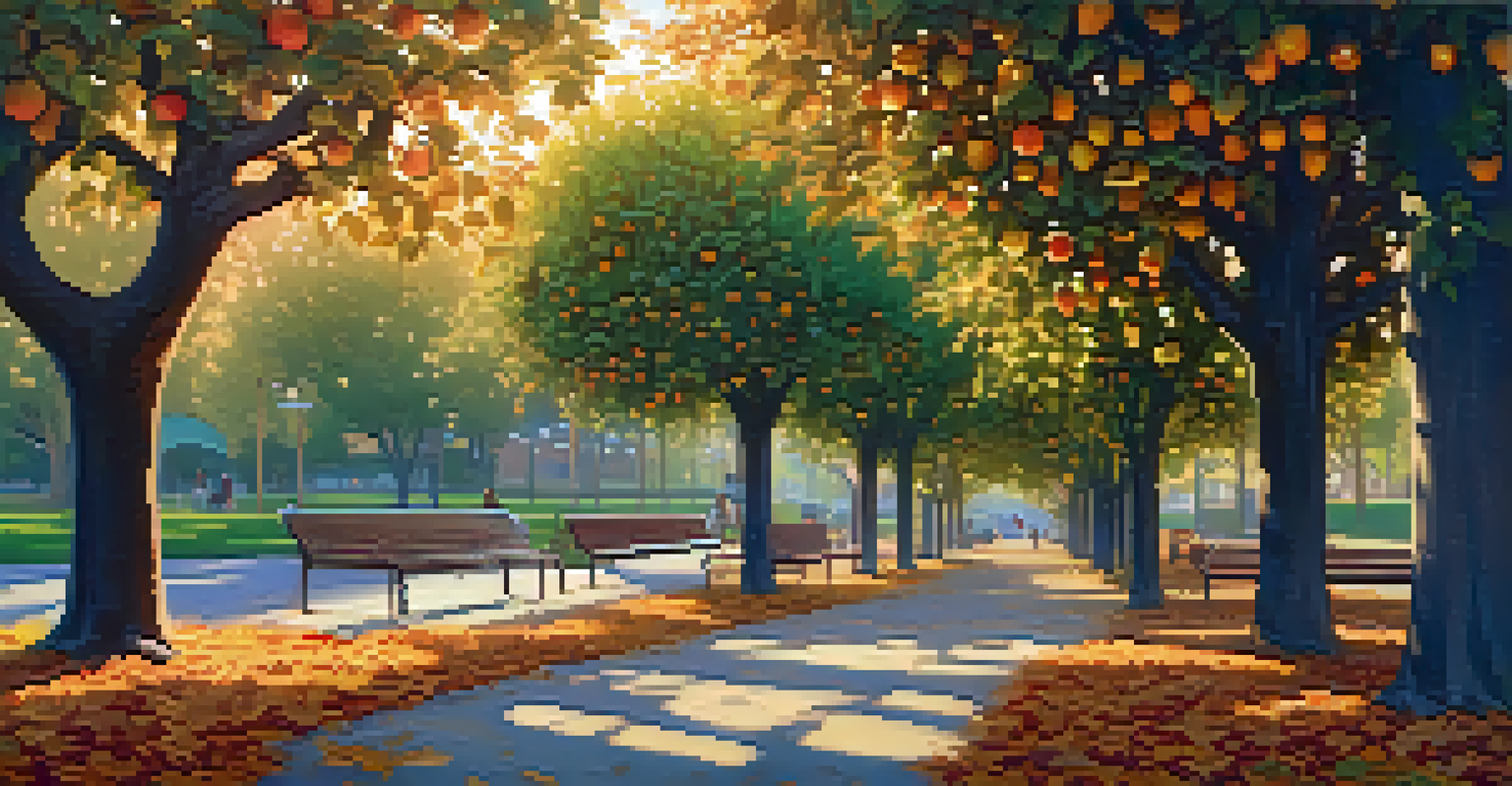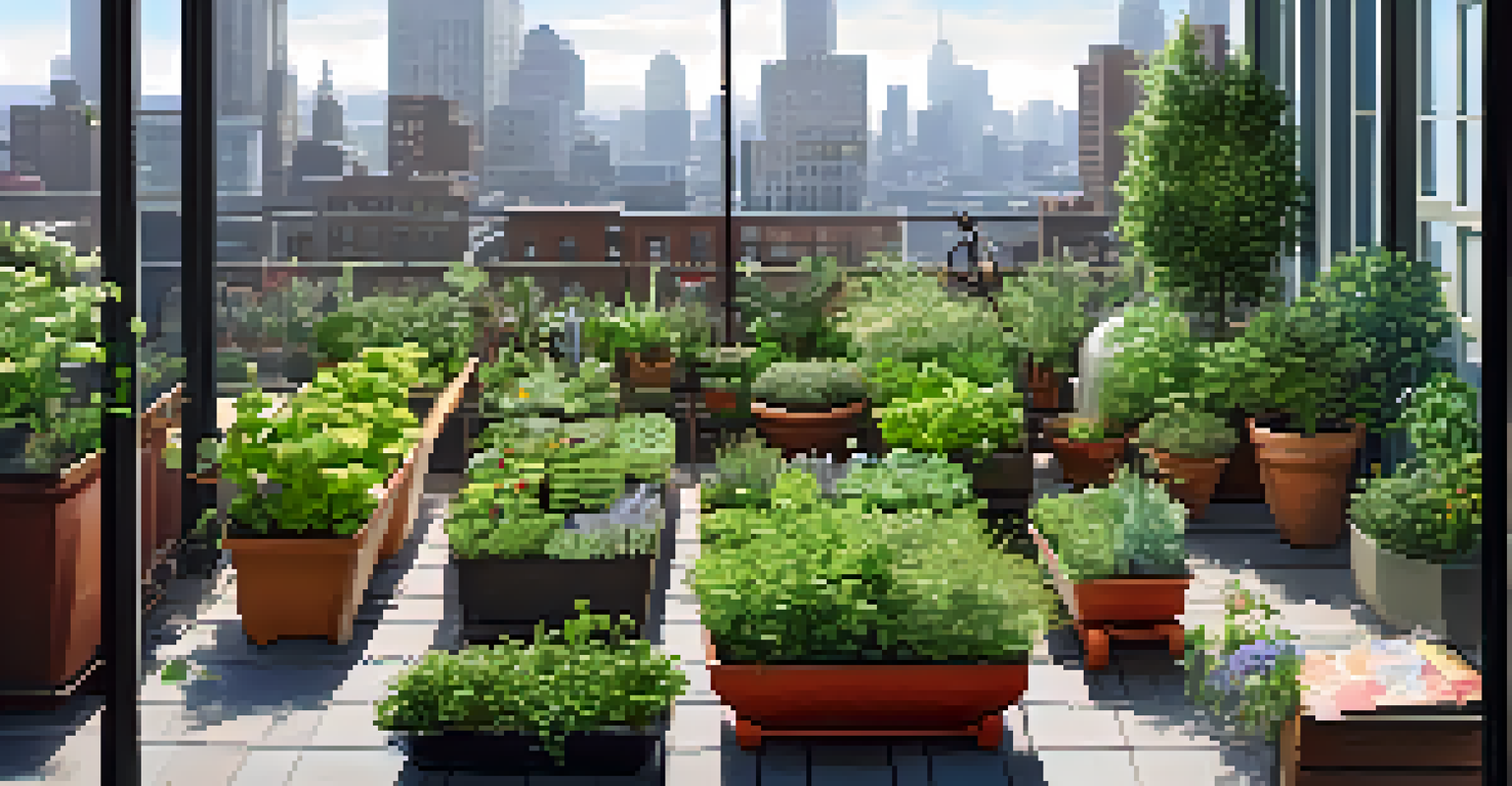Edible Landscaping: Integrating Food Plants into Urban Design

Understanding Edible Landscaping and Its Benefits
Edible landscaping is the practice of integrating food-producing plants into the landscape design of urban areas. This approach not only beautifies the environment but also promotes sustainability by encouraging local food production. Imagine walking through your neighborhood and seeing fruit trees lining the streets, offering fresh snacks to passersby.
The best time to plant a tree was twenty years ago. The second best time is now.
Beyond aesthetics, edible landscaping enhances biodiversity by attracting beneficial insects and birds, which can improve the overall health of the ecosystem. It also contributes to community resilience by reducing food deserts, where access to fresh produce is limited. This means that communities can thrive, fostering a sense of empowerment among residents.
By choosing edible plants that are native or well-adapted to the local climate, urban spaces can become self-sustaining. For example, a community garden might feature a mix of herbs, vegetables, and fruit-bearing plants, creating a vibrant hub for residents. This integration of food plants not only nourishes the body but also enriches the community spirit.
Key Principles of Designing Edible Landscapes
When designing an edible landscape, it's essential to consider principles such as companion planting and seasonal rotation. Companion planting refers to the practice of growing certain plants together for mutual benefits, like pest control or improved growth. For instance, tomatoes thrive when planted alongside basil, creating a mini ecosystem that supports both plants.

Another principle is to focus on functionality and aesthetics. An edible landscape should not only provide food but also be visually appealing. This can be achieved by incorporating a variety of colors, textures, and heights, which can make the space inviting for both people and wildlife.
Edible Landscaping Enhances Cities
Integrating food-producing plants into urban landscapes beautifies the environment and promotes sustainability.
Moreover, planning for accessibility is crucial. Raised beds, for instance, can make gardening easier for those with mobility challenges. By designing with inclusivity in mind, we create spaces that everyone can enjoy, fostering a sense of belonging and community pride.
Choosing the Right Plants for Urban Spaces
Selecting the right plants is key to successful edible landscaping. Consider local climate, growing conditions, and the specific needs of the plants. For urban settings, plants that are hardy and require minimal maintenance, such as herbs or perennial vegetables, are often ideal choices.
We do not inherit the earth from our ancestors; we borrow it from our children.
Native plants are particularly beneficial as they are adapted to the local ecosystem and require less water and care. For example, planting blueberries or blackberries can provide delicious fruit while attracting pollinators and birds, adding life to the urban landscape. This choice also supports local biodiversity, which is vital in urban settings.
Don’t forget to think about the seasons when choosing plants. Incorporating a mix of fruits, vegetables, and herbs that produce at different times can ensure a continuous harvest throughout the year. This not only offers a variety of fresh produce but also keeps the landscape dynamic and engaging.
Integrating Edible Landscapes in Community Spaces
Community involvement is essential for the success of edible landscapes. By engaging residents in the planning and planting processes, you foster ownership and a sense of pride in the project. Workshops or community meetings can serve as platforms for sharing ideas and gathering input, ensuring that the landscape meets the needs of the community.
Additionally, creating communal gardens can serve as a gathering place for neighbors, further strengthening community ties. These gardens can become hubs for education, where people learn about gardening, cooking, and sustainability. Imagine a place where children learn to plant seeds alongside their parents, creating lasting memories and skills.
Community Involvement is Key
Engaging residents in the planning and planting of edible landscapes fosters ownership and strengthens community ties.
Collaboration with local organizations can also enhance these efforts. Partnering with schools or nonprofits can provide resources, knowledge, and additional volunteers. Together, these partnerships can amplify the impact of edible landscaping projects, making them more sustainable and beneficial for everyone involved.
The Role of Edible Landscaping in Urban Sustainability
Edible landscaping plays a significant role in promoting urban sustainability. By growing food locally, communities can reduce their reliance on transported goods, cutting down on carbon emissions associated with long-distance food travel. This shift towards local food systems is crucial for creating more resilient cities.
Moreover, edible landscapes can help manage stormwater runoff, a common challenge in urban areas. Plants can absorb excess rainwater, reducing the burden on drainage systems and minimizing the risk of flooding. This natural approach to stormwater management can be both cost-effective and environmentally friendly.
Lastly, edible landscaping contributes to food security by enabling communities to produce their own food. In times of crisis, such as during a pandemic or economic downturn, having local food sources can make a significant difference. This self-sufficiency not only empowers communities but also promotes healthier eating habits.
Challenges in Implementing Edible Landscaping
While the benefits of edible landscaping are clear, there are challenges to consider. One major hurdle is the perception that growing food in urban areas can be messy or unkempt. Overcoming this stigma requires education and demonstration of successful projects to show how edible landscapes can be both productive and beautiful.
Another challenge is securing space for edible plants in crowded urban environments. Limited land availability means that creative solutions, such as vertical gardens or rooftop farms, may be necessary. By utilizing every available space, from balconies to park strips, urban dwellers can maximize their potential for growing food.
Future Trends Embrace Sustainability
Emerging trends like vertical gardening and smart gardening tools are making edible landscaping more accessible and efficient.
Additionally, ongoing maintenance and care are essential for the success of these landscapes. This often requires a commitment from community members or organizations to ensure the plants thrive. Establishing regular maintenance schedules and encouraging volunteer participation can help address these issues while fostering community engagement.
Future Trends in Edible Landscaping
The future of edible landscaping looks promising, with trends emerging that prioritize sustainability and community involvement. Vertical gardening, for instance, is gaining popularity in urban settings, allowing residents to grow food in limited spaces. This innovative approach not only maximizes space but also adds visual interest to urban environments.
Another trend is the integration of technology in gardening practices. Smart gardening tools, such as moisture sensors and automated watering systems, are making it easier for urban gardeners to maintain their plants. This combination of nature and technology can help ensure the success of edible landscapes, even in challenging environments.

Finally, as awareness of food deserts and sustainability grows, more cities are embracing edible landscaping as part of their urban planning initiatives. This shift towards incorporating food production into public spaces reflects a broader understanding of the importance of local food systems. As communities continue to explore these possibilities, the future of edible landscaping is set to flourish.